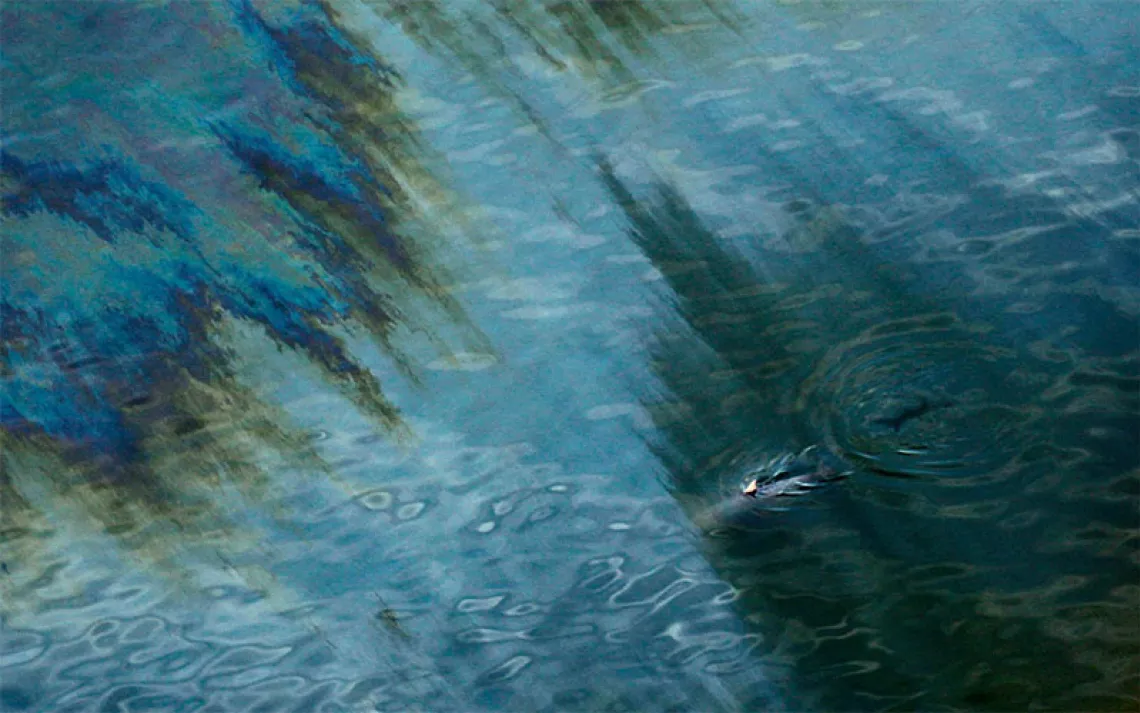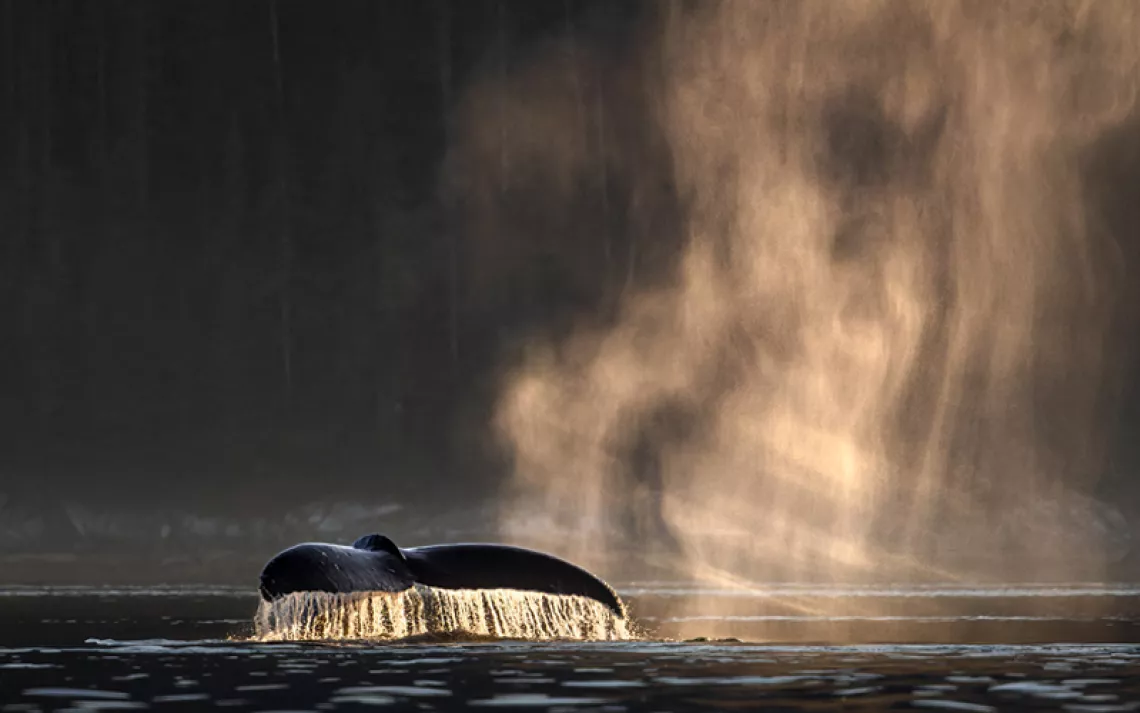The Pacific Coast's Wild Edge
Photos from Florian Schulz's book, The Wild Edge: Freedom to Roam the Pacific Coast.
|PHOTOS BY FLORIAN SCHULZ
Gray whales have one of the longest migrations of any mammal, traveling each year from calving lagoons along Mexico’s Baja Peninsula up to feeding grounds in Alaska’s Beaufort Sea. Similarly impressive migrations along the Pacific Coast are made by other whale species, as well as elephant seals, sea lions, sharks, tuna, and the millions of birds that traverse the Pacific Flyway. For his recent book, The Wild Edge: Freedom to Roam the Pacific Coast (Mountaineers Books, 2015), nature photographer Florian Schulz traveled along this migratory corridor to document how sections of the coast are linked by the movement of wildlife.
Using a variety of photographic styles and equipment, Schulz documented spectacular moments across the wilderness of the Pacific seaboard, from an intimate portrait of a bear fishing for salmon to an aerial landscape of migrating whales. The nature photographer’s diverse portfolio is evidence of his desire to show, as he puts it, “the scale at which nature is interconnected.”
Schulz developed an interest in nature photography growing up in southern Germany. He remembers borrowing his father’s old camera whenever he went birdwatching or exploring a nearby nature preserve. During that time, the young photographer became aware of how Europe’s dense development impacted its ecology.
"In Germany we see what happens if you don’t have big enough places anymore: Animals like wolves disappear,” explains Schulz. “You need to have large interconnected landscapes for nature to work.”
The promise of large open spaces drew the emerging photographer to North America, where he discovered that even large areas of protected wilderness like Yellowstone National Park aren’t safe from fragmentation. For example, the artificial boundaries of large parks don’t necessarily take the migrations and dispersal of wildlife into account. Schulz argues that parks can become prisons rather than preserves, especially as climate change causes ecological boundaries to shift. Schulz is a proponent of wildlife corridors, which he believes can correct the fragmentation caused by human-designated wilderness areas by acting as land or water bridges that allow wildlife to move between parks and ecosystems. The photographer says it’s not just about megafauna either—the dispersal of plants and intermediary ecosystems also rely on connected wilderness areas. “In order for a park to flourish, it needs roots in the surrounding areas beyond park boundaries,” explains Schulz.

Sign up to receive Sierra News & Views
Get articles like this one sent directly to your inbox weekly.
With this action you affirm you want to receive Sierra Club communications and may vote on policy designated by the Sierra Club Board.
The Wild Edge extends the idea of wildlife corridors to the marine environment. Just as the migrations of elk, pronghorn, and buffalo have shaped efforts to connect parks across the Rocky Mountains, Schulz hopes the gray whale will become the flagship species that galvanizes people to advocate for marine wildlife corridors along the Pacific Coast. “I would see lagoons filled with whales [in Baja] and then I would launch an expedition to Alaska, sail out to the Aleutians, and then suddenly there they would be again—the gray whales I had seen earlier,” says Schulz. ”There were many encounters like this where I would see that the interconnected ecosystem is still working.”
But Schulz says that we can’t take moments like this for granted. As the ocean gets warmer and more acidic, and sea ice disappears, it will have a domino effect on all of the coast’s inhabitants. While we may not think about Alaska or Baja when we see a gray whale off the shore of a local beach, explains the photographer, that experience has deep ties to both of those places. Schulz hopes that his work will help people who live along the Pacific Coast become aware that their section is part of a greater interconnected ecosystem. As Schulz says, “It's not just about the waves in front of your beach.”
To get the full scope of the project, pick up a copy of The Wild Edge, or visit www.thewildedge.org.
 The Magazine of The Sierra Club
The Magazine of The Sierra Club







